复合数据类型,英文词频统计
作业要求来源:https://edu.cnblogs.com/campus/gzcc/GZCC-16SE1/homework/2753
1.列表,元组,字典,集合分别如何增删改查及遍历。
列表
增:

删:

改:

查:

遍历:

元组(元组是不可变类型,不能更新或者改变元组的元素)
增:

删:
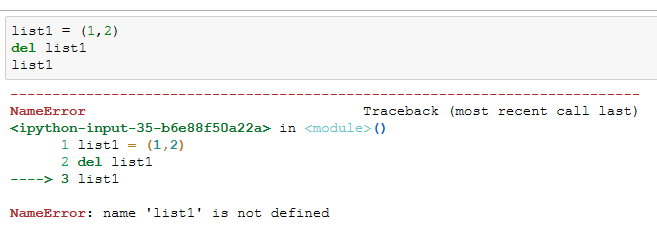
查:
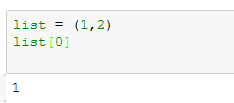
遍历:
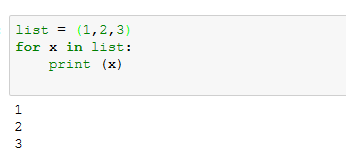
字典
增:
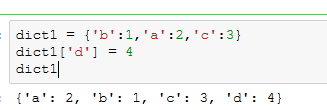
删:

改:
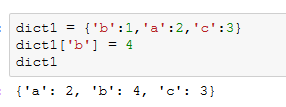
查:

遍历:
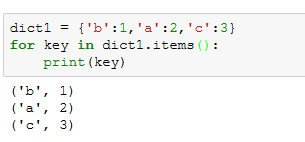
集合(由于集合是无序的又没有索引,所以改不了)
增:
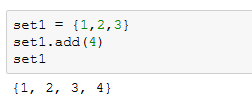
删:

遍历:
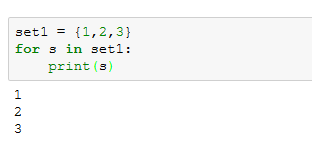
2.总结列表,元组,字典,集合的联系与区别。参考以下几个方面:
括号
列表用“[]”表示,元组用“()”表示,字典用“{}”表示,集合用“{}”表示;
有序无序
列表有序,元组有序,字典无序,集合无序;
可变不可变
列表可变,元组不可变,字典可变,集合可变;
重复不可重复
列表可重复,元组可重复,字典键不可重复,值可以重复,集合不可重复;
存储与查找方式
列表以值的方式存储为值,可通过索引查找;
元组以值的方式存储为值,可通过索引查找;
字典以键值对的方式存储为值,一般通过键查找;
集合以值的方式存储为值,可以通过set()来将序列和字典转换为集合。
3.词频统计
1.下载一长篇小说,存成utf-8编码的文本文件 file
2.通过文件读取字符串 str
3.对文本进行预处理
4.分解提取单词 list
5.单词计数字典 set , dict
6.按词频排序 list.sort(key=lambda),turple
7.排除语法型词汇,代词、冠词、连词等无语义词
自定义停用词表
或用stops.txt
8.输出TOP(20)
9.可视化:词云
排序好的单词列表word保存成csv文件
import pandas as pd
pd.DataFrame(data=word).to_csv('big.csv',encoding='utf-8')
线上工具生成词云:https://wordart.com/create
代码
import string import pandas as pd def statistics(): # 文件读取小说 f = open("The Hound of Baskervilles.txt", "r", encoding='utf-8') novel = f.read() f.close() # 对文本进行预处理 novel = novel.lower() # 分解提取单词 list for c in string.punctuation: novel = novel.replace(c, " ") novel = novel.split() # 读取无语义词 s = open("stopwords.txt", "r", encoding='utf-8') stopWords = s.read() s.close() # 对无语义词进行整理 for c in {"\n","'"}: stopWords = stopWords.replace(c," ") stopWords = stopWords.split() # 排除语法型词汇,代词、冠词、连词等无语义词 wordsSet = set(novel) - set(stopWords) wordsCount = {} # 按词频排序 for i in wordsSet: wordsCount[i] = novel.count(i) top = list(wordsCount.items()) top.sort(key=lambda x: x[1], reverse=True) # 输出TOP(20) pd.DataFrame(data=top[0:20]).to_csv('top20.csv', encoding='utf-8') statistics()
效果图
csv
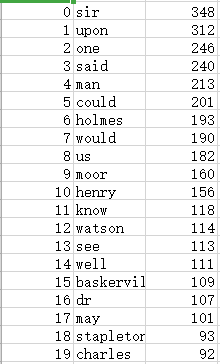
词云




